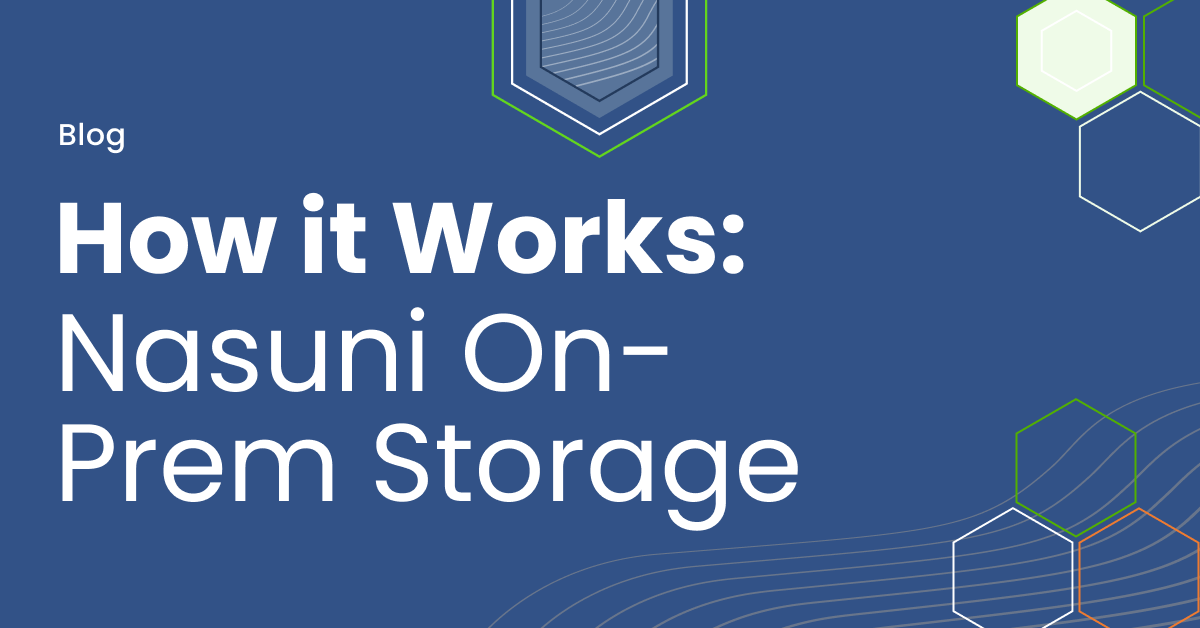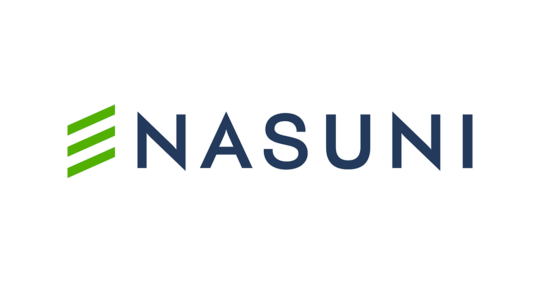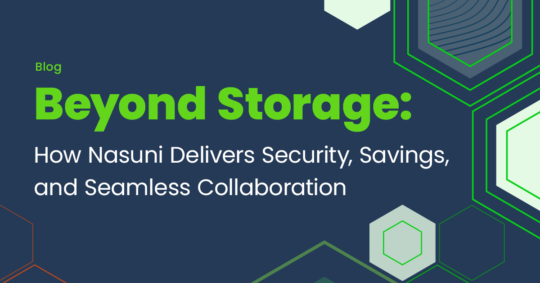How it Works: Nasuni On-Prem Storage
Nasuni Senior Solutions Architect Israel Feygelman discusses how Nasuni can enhance on-prem storage strategies for enterprises.
June 17, 2025 | Israel Feygelman

As a hybrid cloud storage solution, Nasuni by nature operates both in the cloud and at the edge. Although we tend to focus on cloud when detailing the merits of the system’s architecture, Nasuni would not be a successful storage software solution if the platform did not perform on-prem. In this post I’ll review Nasuni as an on-prem solution, how it can be deployed in multiple formats in multiple places, and both how and why it works.
Performance
Once a customer moves to Nasuni, their unstructured file data scales in cloud object storage, managed by a single cloud-native global file system. However, the end users within the organization access the files they need through Nasuni Edge caching appliances. Inside each Nasuni Edge, a patented algorithm caches frequently accessed files, ensuring that hot data remains close to both end users and applications. This is why our cloud-native platform can maintain LAN-speed access for local users. The files they need and work on frequently remain cached close by.
Meanwhile, the caching algorithm continuously monitors file access and usage behaviors and learns to maintain hot data on-prem. As users make changes to files or create new files, the Nasuni Edge caching appliances push these deltas to the object store, updating the gold copy of each file in the cloud and, for reasons detailed below, eliminating the need for separate file backup.
Flexibility
Each caching device can be customized and sized to the needs of a particular office or branch. A major location with thousands of users will be tuned and sized differently than a remote site with a few employees. Since Nasuni offers a software-based on-prem solution – the edge caching appliances are virtual machines – these parameters can be adjusted on the fly as the needs of your organization change. The performance of your on-prem appliance can be increased. Your cache can be sized up or down as needed. With traditional NAS solutions, you would either have to pre-purchase capacity and risk underutilization or purchase more when the time comes, forced to wait on hardware, installation, and configuration.
Because the Nasuni Edge caching appliances are storage software solutions, we can deploy an unlimited number of them across an organization’s environment. This allows for a tremendous amount of flexibility at the global and local levels. Nasuni Edges can be deployed entirely in the cloud as well, which facilitates remote access and improves the performance of virtual desktop infrastructures.
Efficiency
One of the undervalued benefits of object storage is that it gives you immediately usable storage. Traditional on-prem storage, on the other hand, is sold by raw capacity. The trick is that you don’t actually have access to all that capacity. First you need to account for RAID, which reduces usable capacity by 20-30%. Then you have to deploy the storage provider’s operating system on the hardware, too, which consumes more space. Generally, you lose an average of 25-30% of the capacity you purchase before you even get started.
Nasuni Edge caching appliances can be thin on-prem because they are not asked to store infrequently accessed files. That data scales in the cloud. The capacity you purchase through your Nasuni service is immediately usable capacity.
Security
Typically, traditional core data locations enjoy best-in-class services, while remote edge locations are addressed with other “good enough” solutions that end up adding administrative workloads and providing lesser capabilities at the edge. Nasuni breaks that mold by providing the same capabilities across the whole platform, regardless of location or composition. These features include data protection, encryption, compression, and real-time malware mitigation. All of these are applied across the whole platform, allowing each location to be treated equally without compromising any capabilities.
Simplicity
This post is something of an anomaly because we rarely separate the on-prem and cloud elements of Nasuni. It’s all one system. The cloud-native file system, cloud services like Global File Acceleration, and your Nasuni Edge cache appliances are all integrated into a single service. For systems and storage administrators, this makes the platform simpler to manage than other traditional and cloud solutions because it’s one consolidated technology. And it’s simpler for end users because it’s so familiar.
When prospective customers ask how moving to Nasuni will impact or disrupt their end users, I tend to tell them it’s very vanilla. Your users won’t see any changes because we do everything on the back end, behind the curtain. (Unless they collaborate frequently with colleagues in other offices or parts of the world, in which case they will see a marked increase in performance.) They see their familiar file shares and everything works the way it has always worked. The difference is far more apparent to IT.
The transition to Nasuni will lower your costs. You’ll add capabilities like fast file restores and global file collaboration. You won’t have to manage local backup. And you won’t have to worry about on-prem file storage hardware. Instead of managing hardware at each location, you will be overseeing a single, flexible, and more powerful storage software solution that can be tuned to the particular needs of all your on-prem sites.
Related resources

Report
Gartner’s Market Guide For Hybrid Cloud Storage 2025 Report
Learn how hybrid cloud storage is rapidly evolving into a cornerstone for enterprise data strategies, offering agility, scalability, and resiliency across…
Learn more
Infrastructure modernization
Nasuni can help your IT infrastructure modernization journey to let you scale, manage, and protect data with ease.
Learn more
February 18, 2025 | Nasuni
Beyond Storage: How Nasuni Delivers Security, Savings, and Seamless Collaboration
Learn how the Nasuni File Data Platform delivers business resilience, cost savings, IT efficiency, and employee productivity.
Read more